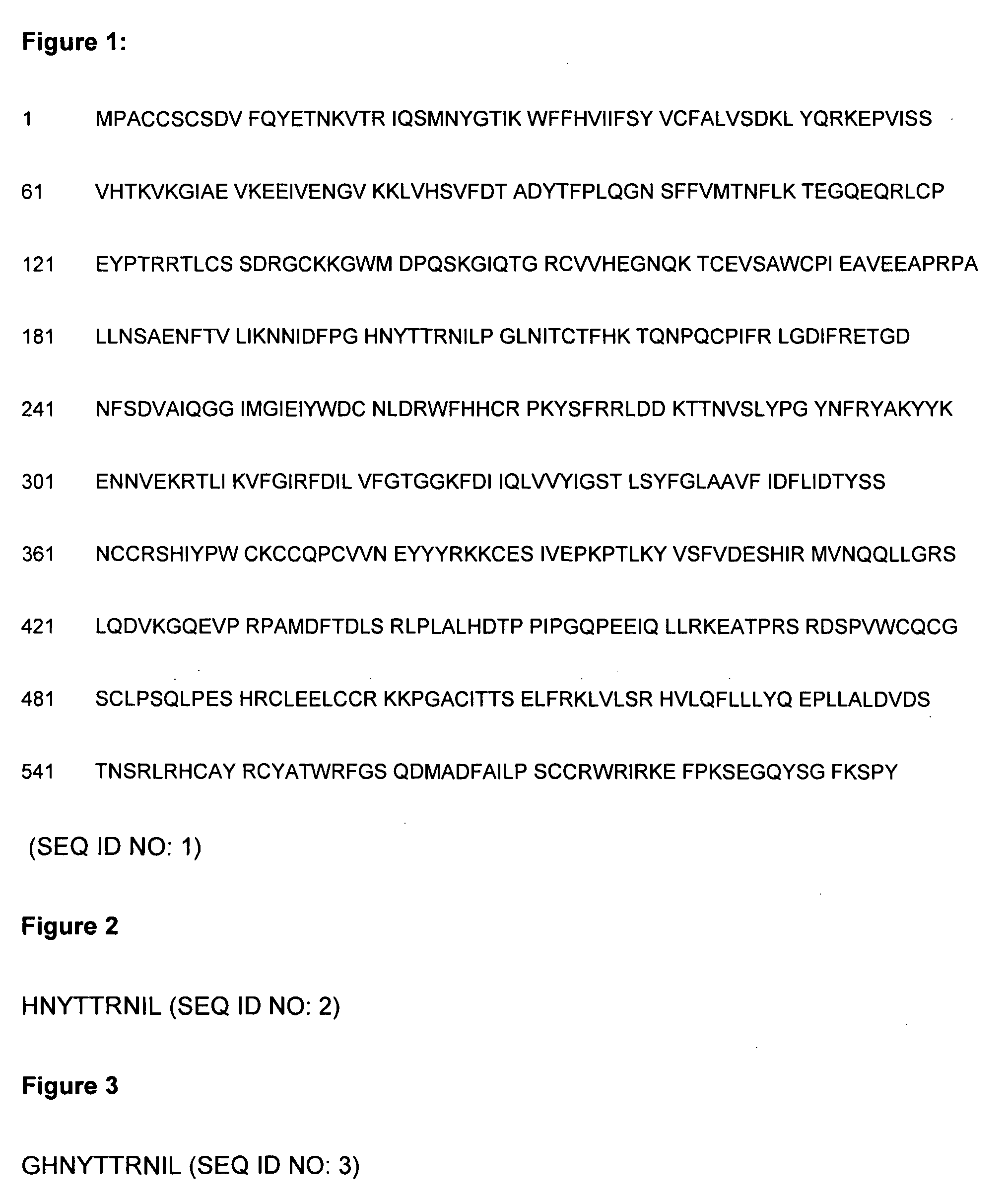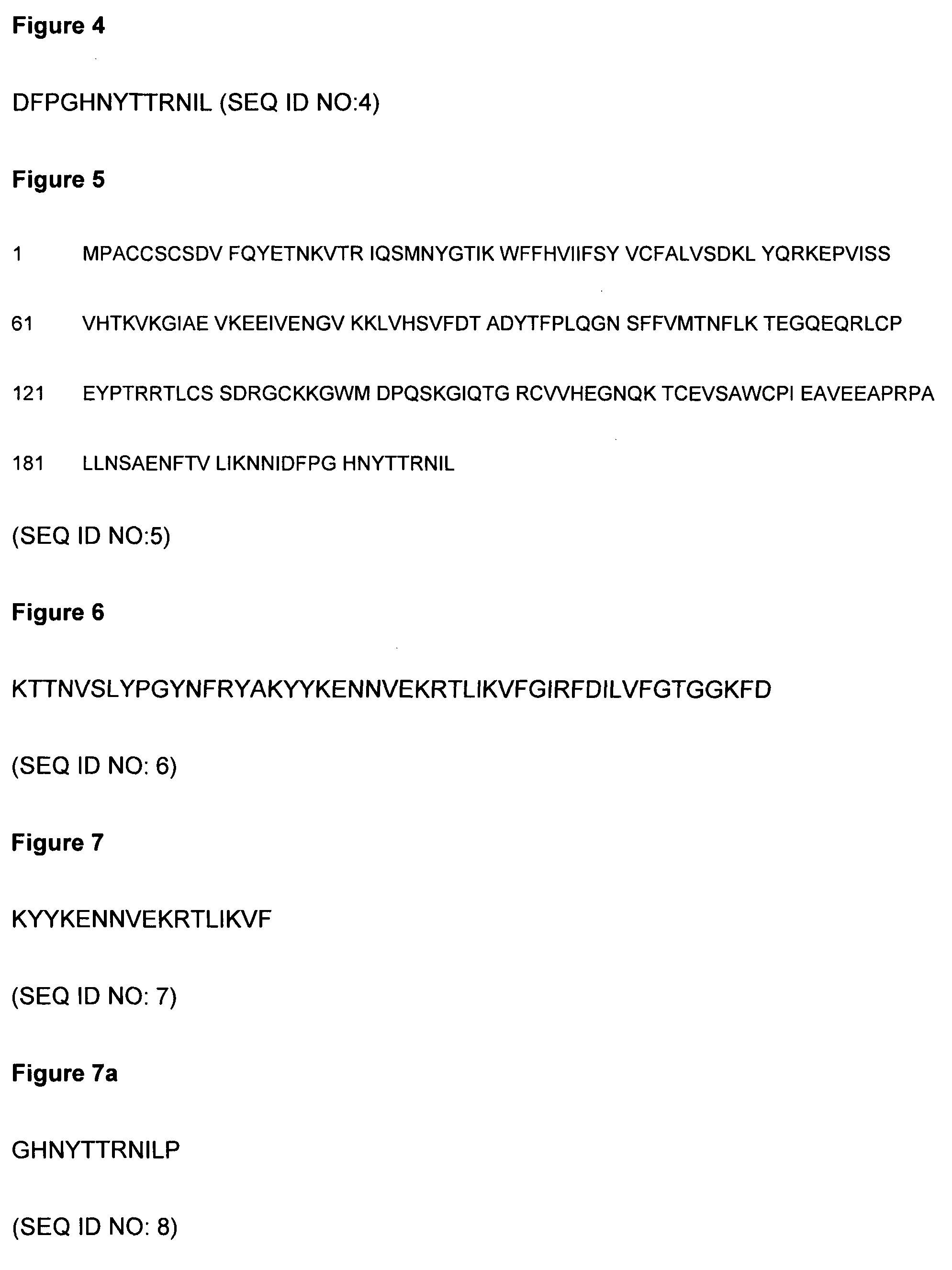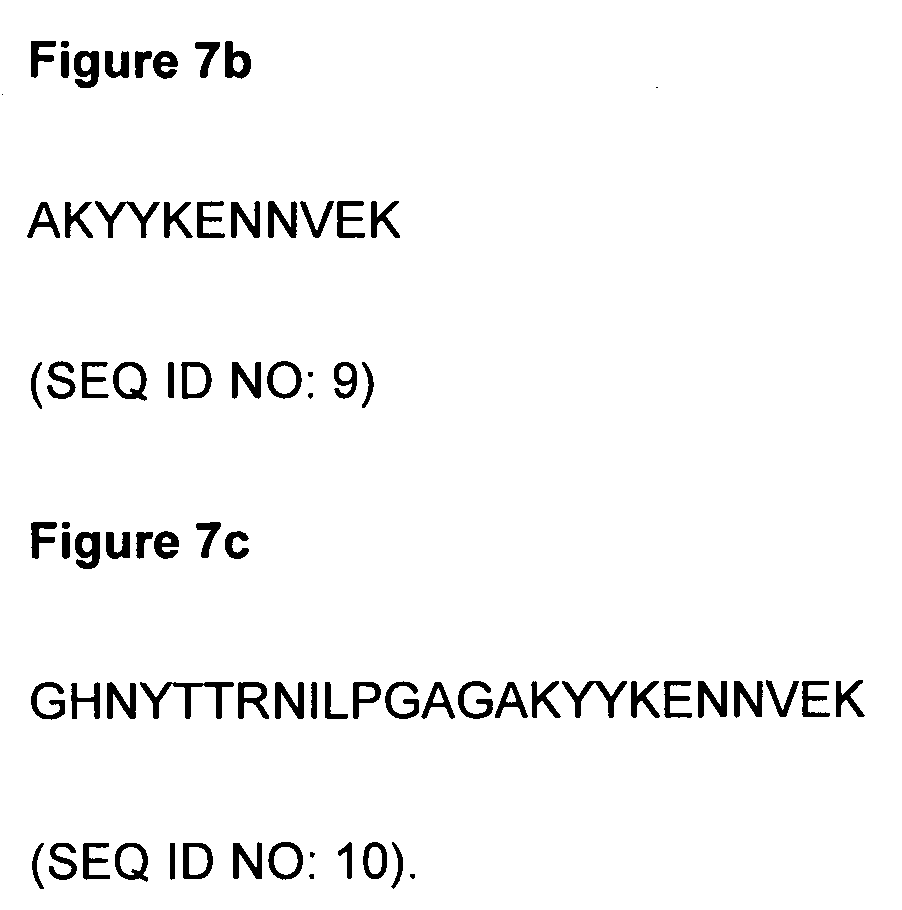Antibodies for binding to non-functional P2X7 receptors in trimeric form
a technology of antibodies and receptors, applied in the field of peptides, epitopes and monoclonal antibody production, can solve problems such as difficulty in obtaining a useful hybridoma
- Summary
- Abstract
- Description
- Claims
- Application Information
AI Technical Summary
Benefits of technology
Problems solved by technology
Method used
Image
Examples
example 1
Determining a Three Dimensional Model of Non Functional P2X7 Receptor to Identify Putative Epitopes for Antibody Binding
[0202]P2X7 monomer structure was based on the modelling performed by Hansen et al. 1998 (Hansen, M. A., Barden, J. A., Balcar, V. J., Keay, K. A., Bennett, M. R. (1997) Biochem. Biophys. Res. Commun. 236, 670-675. Structural motif and characteristics of the extracellular domain of P2X receptors) in which structural homology was determined between P2X subtypes. Further structural homology was obtained with the Ser transferase structure in the PDB data base as it applied to the larger of the two extracellular domains identified in Hansen supra.
[0203]This model became the basis for the identification of the residues crucial for binding ATP. These identified residues were altered to Ala using site directed mutagenesis and the mutated receptors were expressed in HEK cells for the purpose of measuring function of the P2X7 channel / pore.
[0204]The critical residues found in...
example 2
Peptide Design
[0208]Specific selection of the composite peptide forming an accessible interface between monomers in the non-functional P2X7 receptors involved reducing the lengths on each of the E200 and E300 regions in order to select for antibodies able to bridge between monomers over those selected for binding to one or other monomer face i.e. E200 or E300. For that reason the E200 region was reduced in length from 200-216 to 200-211 (of SEQ ID No: 1), a region still capable of simultaneous of binding two antibodies, and the E300 region was further reduced from 297-313 to 296-306 (of SEQ ID No: 1) to favour antibodies bridging E200 and E300 rather than binding solely to either E200 or E300. The presence of residues 211 and 296 (of SEQ ID No: 1) were designed to complement the residues AG also added for spacing required to appropriately separate the regions in conformational space. The reduction in individual lengths of the E200 and E300 regions combined with appropriate spacing, ...
example 3
Generation of Monoclonal Antibodies
3.1 Methodology
[0210]Mice were inoculated with various composite peptides as described above in the form of 200 / 300-peptide conjugated to diphtheria toxoid. One peptide had the sequence: GHNYTTRNILPGAGAKYYKENNVEK (SEQ ID NO:10). Prior to final boost, animals were screened for activity and best animals were boosted then sacrificed and spleen removed. Spleen cells were isolated and fused to Sp2 / 0 fusion partner cell line at a ratio of no less than 1:2 and no greater than 1:5 depending on format used. Left over spleen cells were cultured in medium for 3 days and supernatant kept for use as a positive control in the assay system.
[0211]Fusion 1—Composite E200 / E300, using 96 well plates, 1 plate with macrophage feeder layers other 4 with conditioned medium only.
[0212]Macrophage plates were numbered 5 and 10.
Hybridisation Procedure
[0213]1. Make fusion tube 1 up to 50 mls with EBSS, spin at 600 rpm for 8 mins.
[0214]2. Remove supernatant from tube 1, +10 ml...
PUM
| Property | Measurement | Unit |
|---|---|---|
| length | aaaaa | aaaaa |
| dissociation constant | aaaaa | aaaaa |
| dissociation constant | aaaaa | aaaaa |
Abstract
Description
Claims
Application Information
 Login to View More
Login to View More - R&D
- Intellectual Property
- Life Sciences
- Materials
- Tech Scout
- Unparalleled Data Quality
- Higher Quality Content
- 60% Fewer Hallucinations
Browse by: Latest US Patents, China's latest patents, Technical Efficacy Thesaurus, Application Domain, Technology Topic, Popular Technical Reports.
© 2025 PatSnap. All rights reserved.Legal|Privacy policy|Modern Slavery Act Transparency Statement|Sitemap|About US| Contact US: help@patsnap.com



